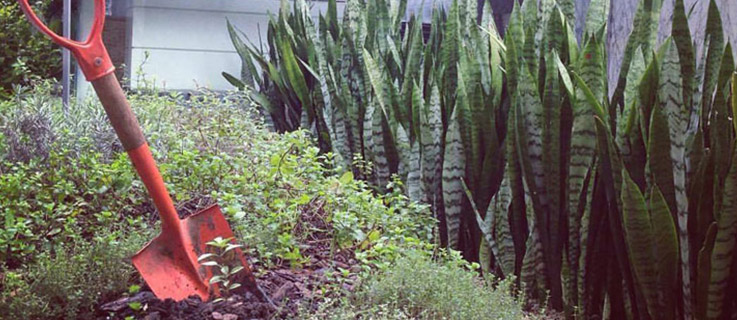The Guandu Institute teaches chefs and cooks how to fuel their kitchens by composting their own trash.
In 2010, journalist Fernanda Danelon was working at a publishing company and was involved in awarding people who were transforming their realities. At the time, she had the chance to meet Ana Maria Primavesi, an award-winning Austrian agronomist, based in Brazil. Her meeting with the academic, the head of important publications on the health of the soil and organic agriculture, inspired big changes in Danelon’s personal and professional life. “Some ideas were already germinating in my mind, like economist Ladislaw Dowbor’s thinking about the transition from a consumer society to a society of knowledge. After that meeting with Primavesi, I realized there is a relationship between trash and food production in the big cities, and it is one of the greatest challenges of our time,” she says.
Resolved to change the course of her life, Danelon left her work at the publishing company and went on to seek new ways of deepening her knowledge about food production, networking with the group Hortelões Urbanos (Urban Gardeners), which today is made up of more than 60,000 members (at the time there were only 500) and which was the source of inspiration for new business models – that were fairer, more proactive and sustainable. But the real turning point would come in 2013: São Paulo was undergoing radical changes coming from public groups demanding Zero Fare public transport and a redefinition of urban space, and demonstrations and police violence dominated the streets and news headlines. “In October, I launched the Guandu Institute,” she recalls.
Reusing resources
Based on the concept “From Plate to Plate,” the Institute offers environmental solutions for large restaurants and seeks to inspire restoring the planet’s health. How? By composting organic trash, food preparation excess and leftovers, which go to landfills. Composting doesn’t only help to diminish the volume in landfills – which are high pollutants of soil and ground waters and a contributor to global warming due to the enormous quantity of methane gas emitted into the atmosphere – but it also produces fertilizer, such a fundamental resource for food production. Transformed into agricultural material thanks to the precious work of worms, the fertilizer completes the cycle that leaves the plate as excess and returns to the plate as food, which Danelon supplies to her clients in little jars of thyme, parsley, cilantro and cherry tomatoes, among a dozen other ingredients she cultivates herself at the garden she set up at home.
The first client to believe in the work of the Guandu Institute was chef Alberto Landgraff, of the restaurant, Epice. “My routine changed completely,” Danelon says, having bought a car to put the five kilos of trash she collected daily into her trunk and bring it to the composting station. “I did everything by myself. I brought the kids to school with the car reeking. Everyone thought I was crazy, but it was what I wanted to do and I kept on.” Today, three years after she started the Guandu, Danelon supplies two hotels and 15 restaurants, including the Goethe-Institut São Paulo, which even has a small garden full of spices. On average, the Guandu Institute collects 1.5 tons of trash daily, all of which is composted at a factory in Campinas.
Excess of trash and waste
According to Danelon, between 2010 and 2014, whereas the Brazilian population grew 6 percent, the production of trash grew 29 percent. In São Paulo alone, there are 7,000 tons of organic excess per day. There is still a long way to go, but small steps have already marked a beginning, like the São Paulo Compost program, which in 2014 distributed 2,000 home-made composting separators for city residents, as well as the composting center for open-air markets’ waste.
Wouldn’t this be the solution: to diminish the volume in landfills, create more possibilities for urban agriculture to develop, restore degraded soil and water sources and establish new habits? The problem of world hunger is very much related to this. “Berkeley, in California, is composting 40 percent of organic trash and the municipal government has started distributing fertilizer to farmers,” says Danelon.
“Several extinct microorganisms have come back and the grass has improved. Now, these results are going to be quantified in order to implement public policies. We have to go back to working with nature’s cycles and stop producing energy from natural resources. The mud from Samarco can turn into building material,” she adds, referring to the major environmental catastrophe that occurred in 2015 in Minas Gerais, when following the rupture of a dam, 62 million cubic meters of toxic waste coming from the Samarco Mining site spilled into the Rio Doce.” For the next few years, Fernanda Danelon wants to have her own space for composting and also to be able to host groups and carry out an educational project, a sort of urban farm.






